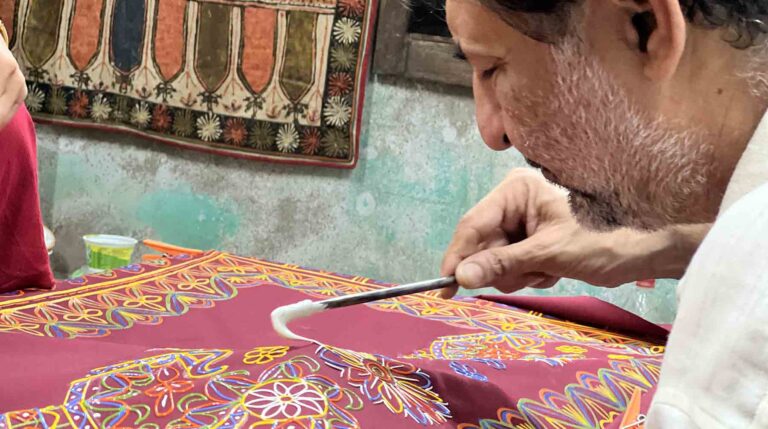Rogan Oil Painting: World Oldest Oil Art Form
Introduction
Rogan oil painting is one of the world’s oldest surviving oil art traditions. Practiced today by a few artisans in Kutch, Gujarat, this ancient craft is known for its intricate handwork and use of drying oil as the base medium. The word Rogan comes from the Sanskrit word “रङ्गन्” (rangan), which means “to add color” or “to dye.”1 Over time, this art form evolved into a fine expression of cultural heritage, carrying both the beauty and the history of Indian craftsmanship.
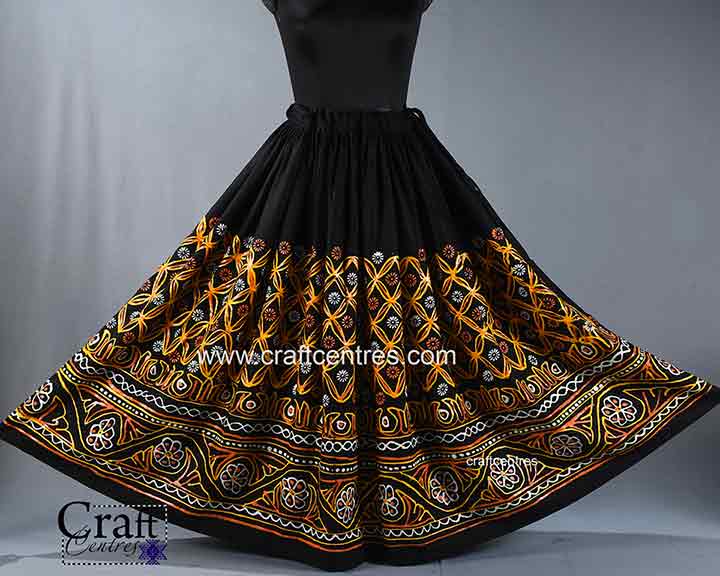
Ancient Roots of the Rogan Oil Painting
The history of Rogan oil painting dates back more than 1,550 years. The technique used in this art—called the “drying oil method”—is among the earliest known ways of creating durable paintings. Historical and archaeological studies have shown that similar drying oil techniques were used in the ancient Buddhist paintings discovered in the Bamiyan caves of Afghanistan, dating to around the 5th or 6th century CE. Buddha’s disciples are master artisans of Rogan oil painting (drying oil technique). Rogan art comes to the Bamiyan from Patliputra, Bihar.
From those early beginnings, the art continued to live in India, most notably in Kutch, Gujarat, where artisans still practice it using the same hand techniques and natural materials that have been passed down for generations.
Preparation of Rogan Paste
The foundation of Rogan art lies in the preparation of its special paste. Local artisans use castor oil, Linseed oil, walnut oil, and poppy seed oil which is native to the semi-arid region of Kutch. The oil is boiled slowly for several hours until it thickens into a sticky, jelly-like substance. Once cooled, it is mixed with natural pigments to create different colors.
Because the paste dries quickly in air, artisans keep it submerged in water when not in use. This careful preparation allows the artist to work smoothly while creating long, continuous lines on the fabric.
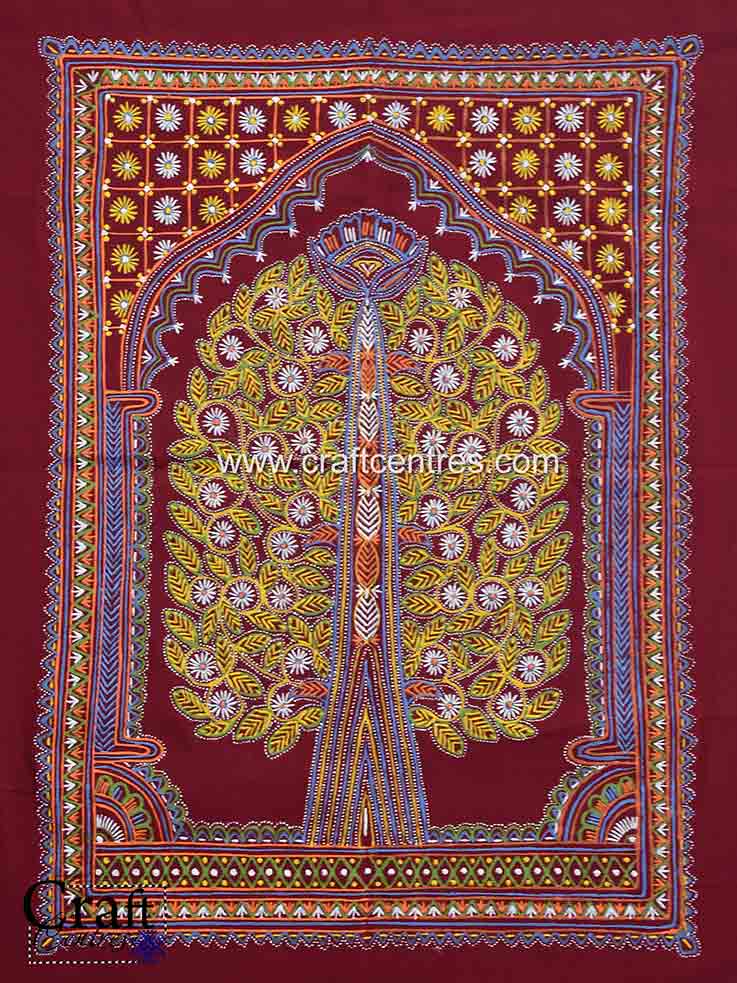
How Rogan Painting is Made
Rogan art is painted not with a brush, but with a thin metal rod or stylus that has a flat end. The artist takes a small amount of colored paste on the palm and rolls it gently with the stylus to warm it with body heat. Then, without touching the cloth, the artist stretches the paste into fine threads, guiding them in the air before placing them delicately on the fabric.
Each stroke is done freehand, and the entire process demands great control and patience. Traditionally, artisans paint one half of a design and then fold the cloth to imprint a mirror image on the other half. This is known as the “mirror technique,” creating perfectly symmetrical designs.
Designs and Symbolism
Rogan art is rich in symbolism, drawing inspiration from nature and daily village life. Common motifs include the Tree of Life, (kalpvriksha) peacocks, flowers, and geometric borders. Each element carries its own meaning — the Tree of Life (kalpvriksha) represents growth and harmony, while birds and flowers symbolize beauty and joy.
These motifs are painted on textiles such as wall hangings, sarees, skirts, and even modern accessories. Despite evolving in form, Rogan art has maintained its visual depth and cultural soul.
Rogan Painting in Kutch
Today, the art of Rogan painting survives mainly in Madhapar village near Bhuj, in the Kutch district of Gujarat. Here, dedicated artists like Ashish Kansara continue to create and teach this ancient craft, preserving the 1,550-year-old tradition. The Kansara family workshop is known for using completely traditional methods — from castor oil preparation to hand-painting on fabric — without any mechanical assistance.
Madhapar remains one of the few places in India where Rogan art is still practiced in its original form, making it a living museum of ancient oil painting heritage.
The Art Forms: Three Main Types
Rogan painting in Kutch is practiced in three distinctive styles:2
- Freehand Rogan Art – Designs made directly with colored paste using a stylus, without folding.
- Nirmika Rogan art – Designs created by stamping or pressing patterns onto fabric.
- Varnika Rogan art – A more decorative form that adds extra colors and embellishments over a base design for a richer look.
These variations show the creativity and versatility of the Rogan tradition as it evolved in local workshops.
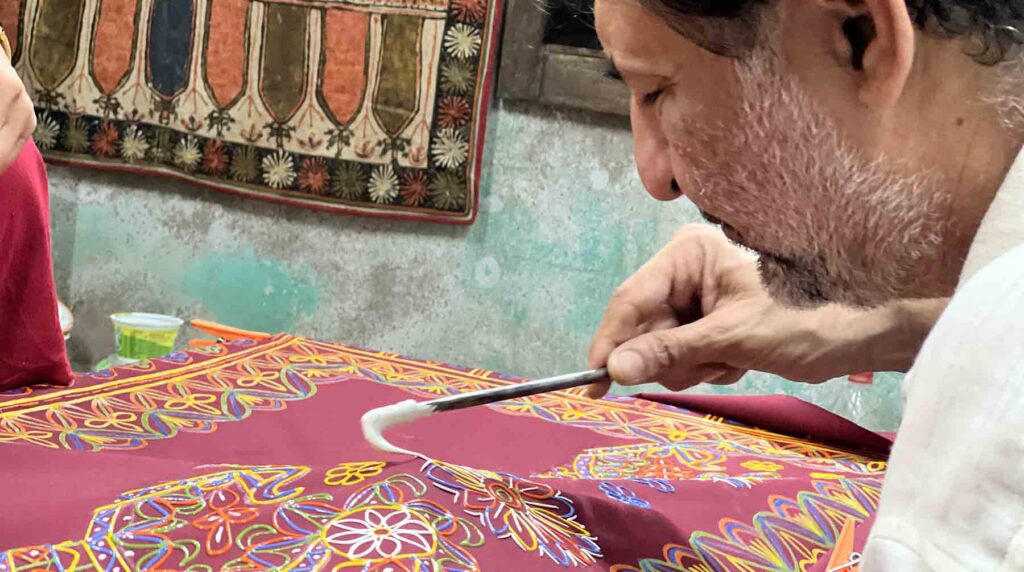
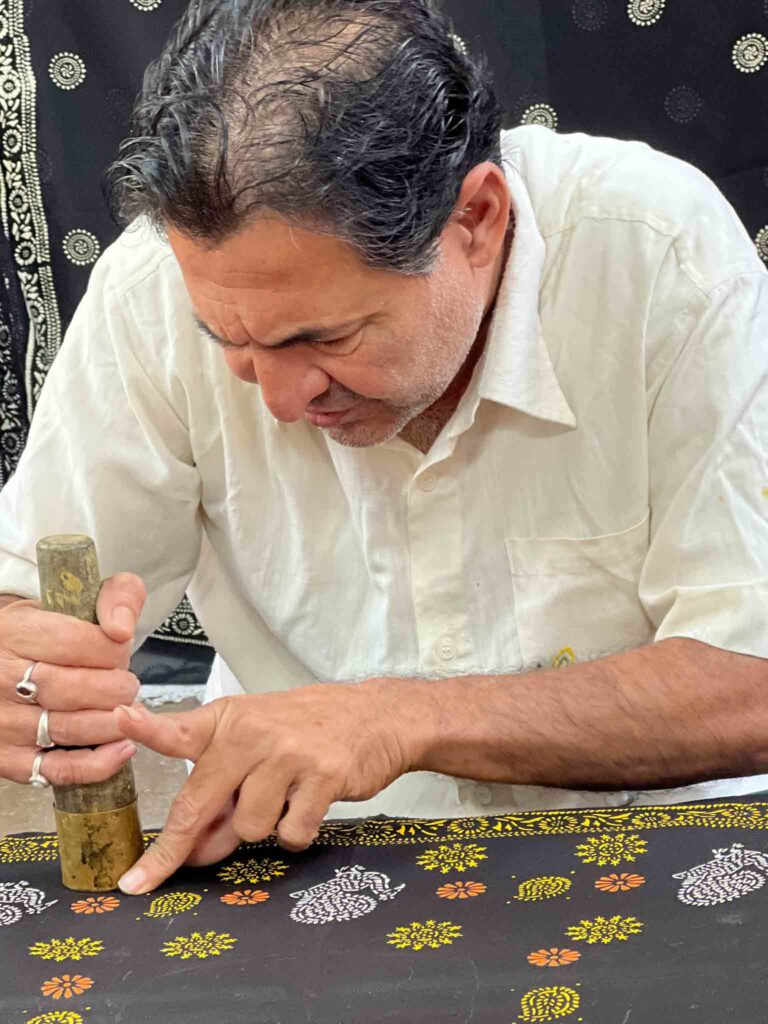
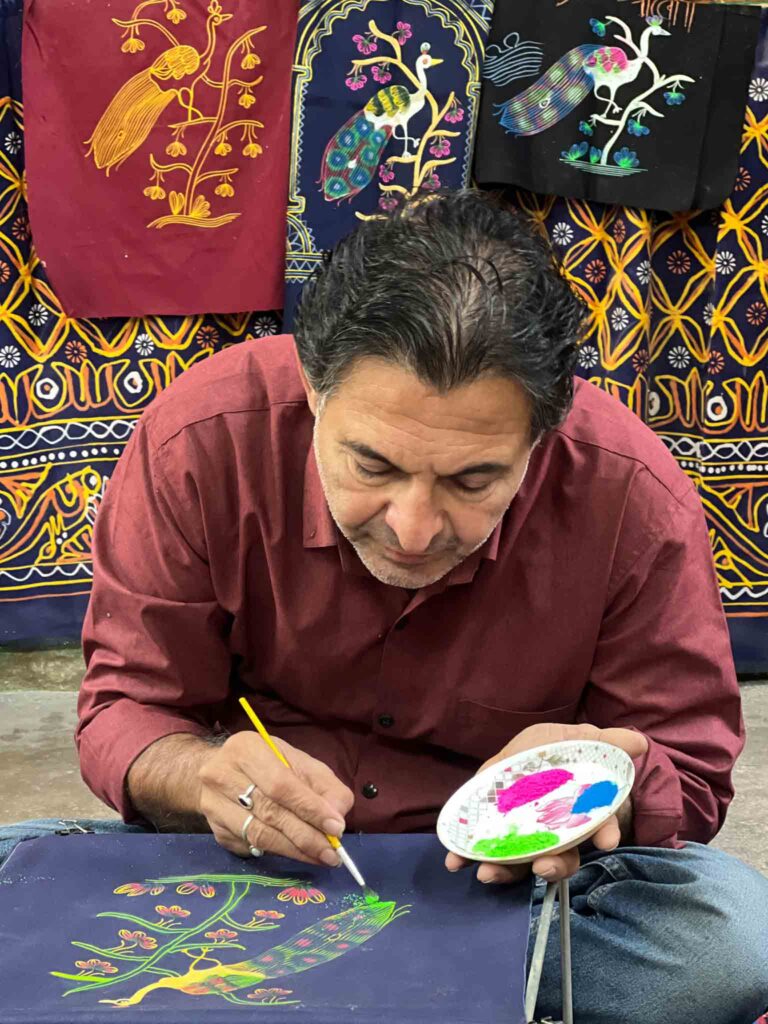
Survival and Revival
Rogan art faced near extinction in the late 20th century when industrial prints and synthetic dyes became popular. However, renewed interest in traditional Indian crafts and efforts by Kutchi artisans have helped revive it. Exhibitions, government recognition, and art enthusiasts from around the world have contributed to its preservation.
Today, each Rogan artwork not only represents centuries of knowledge but also supports the livelihood of Kutch artisans who keep the legacy alive.
Conclusion
Rogan oil painting is more than a decorative art — it is a living connection to India’s ancient artistic and scientific traditions. Its history stretches from early oil techniques of the 6th century to the workshops of modern Kutch. Using nothing more than castor oil, natural color, and skilled hands, artisans transform simple fabric into enduring pieces of art.
As one of the world’s oldest oil painting traditions, Rogan painting continues to reflect India’s creativity, patience, and timeless craftsmanship.


